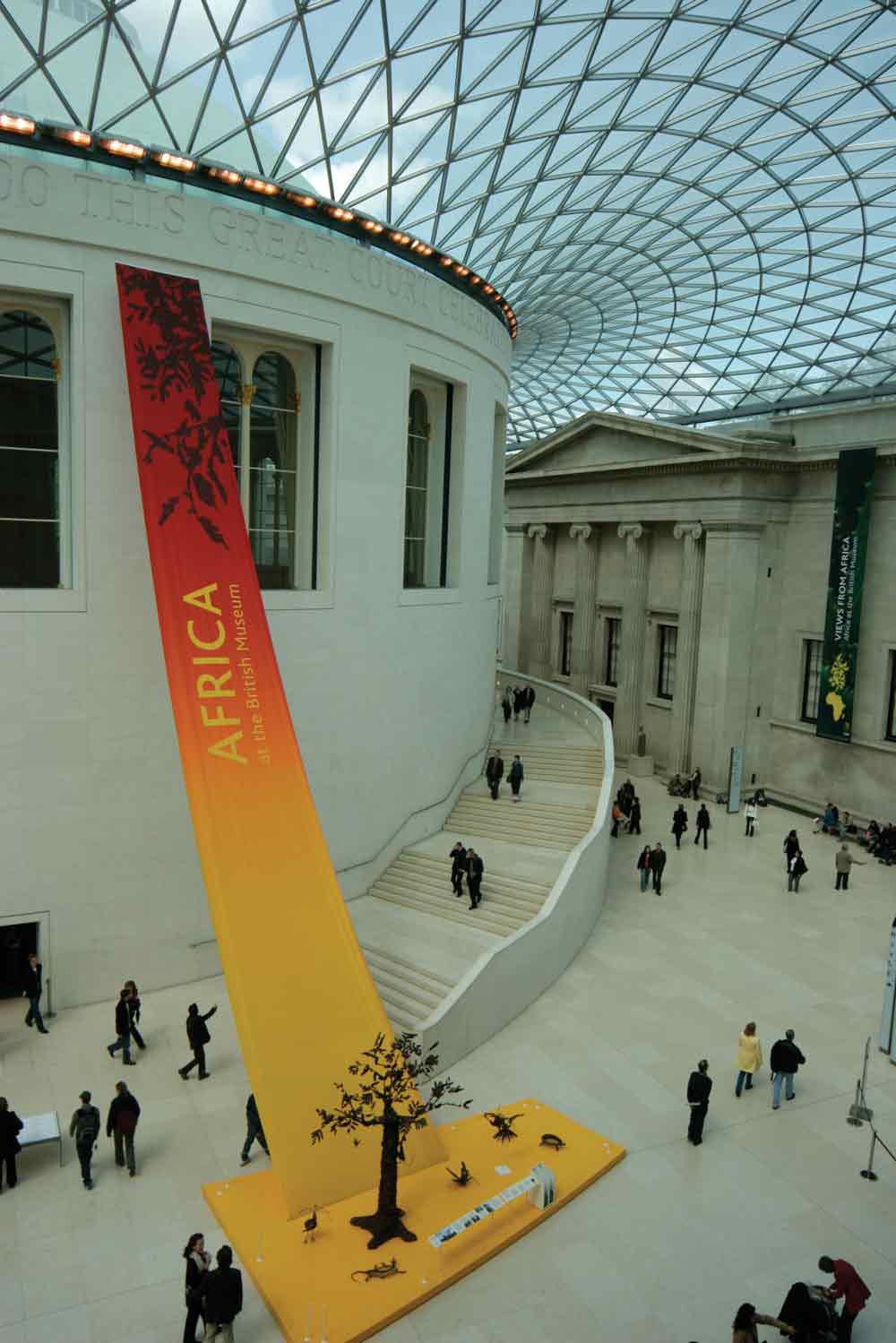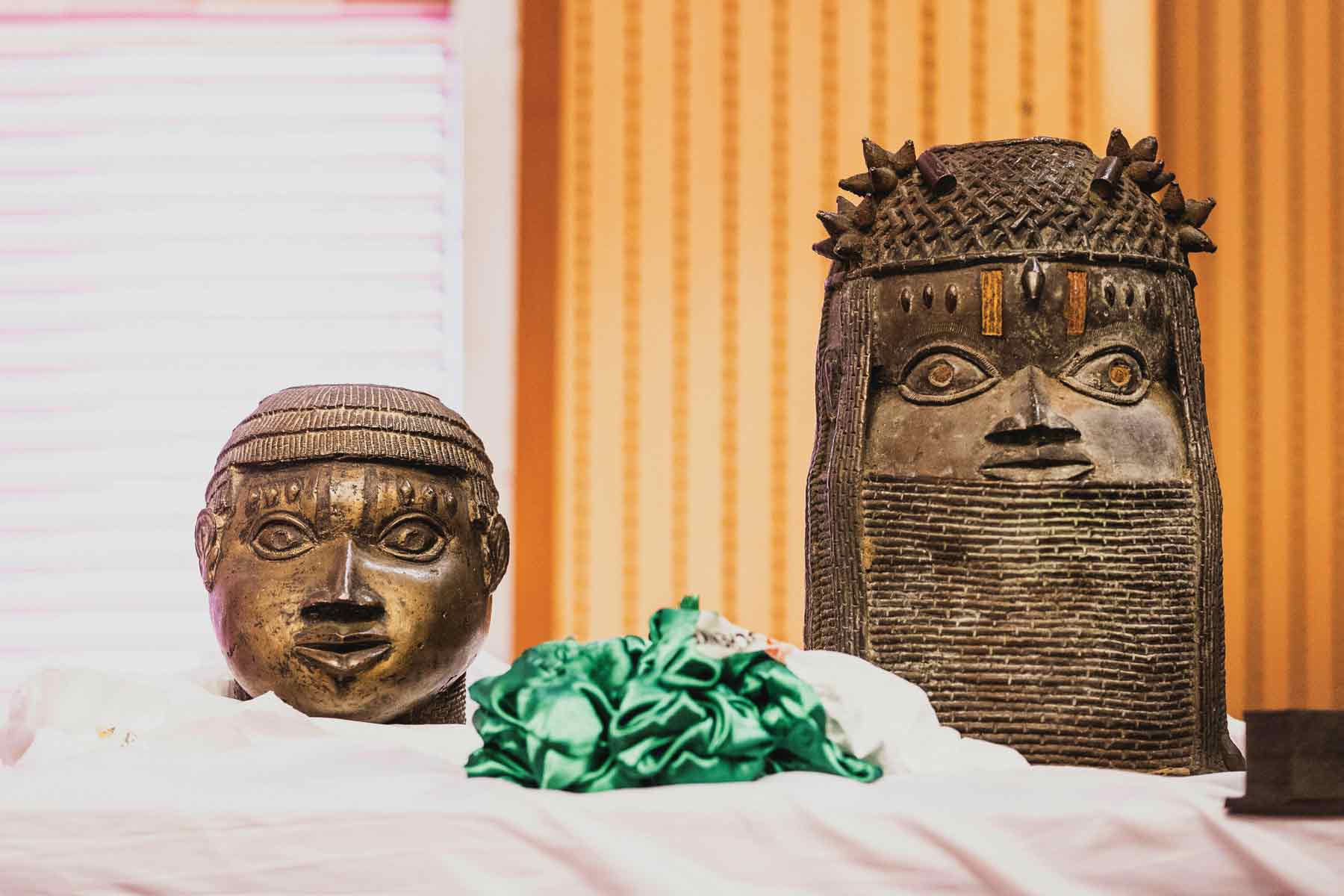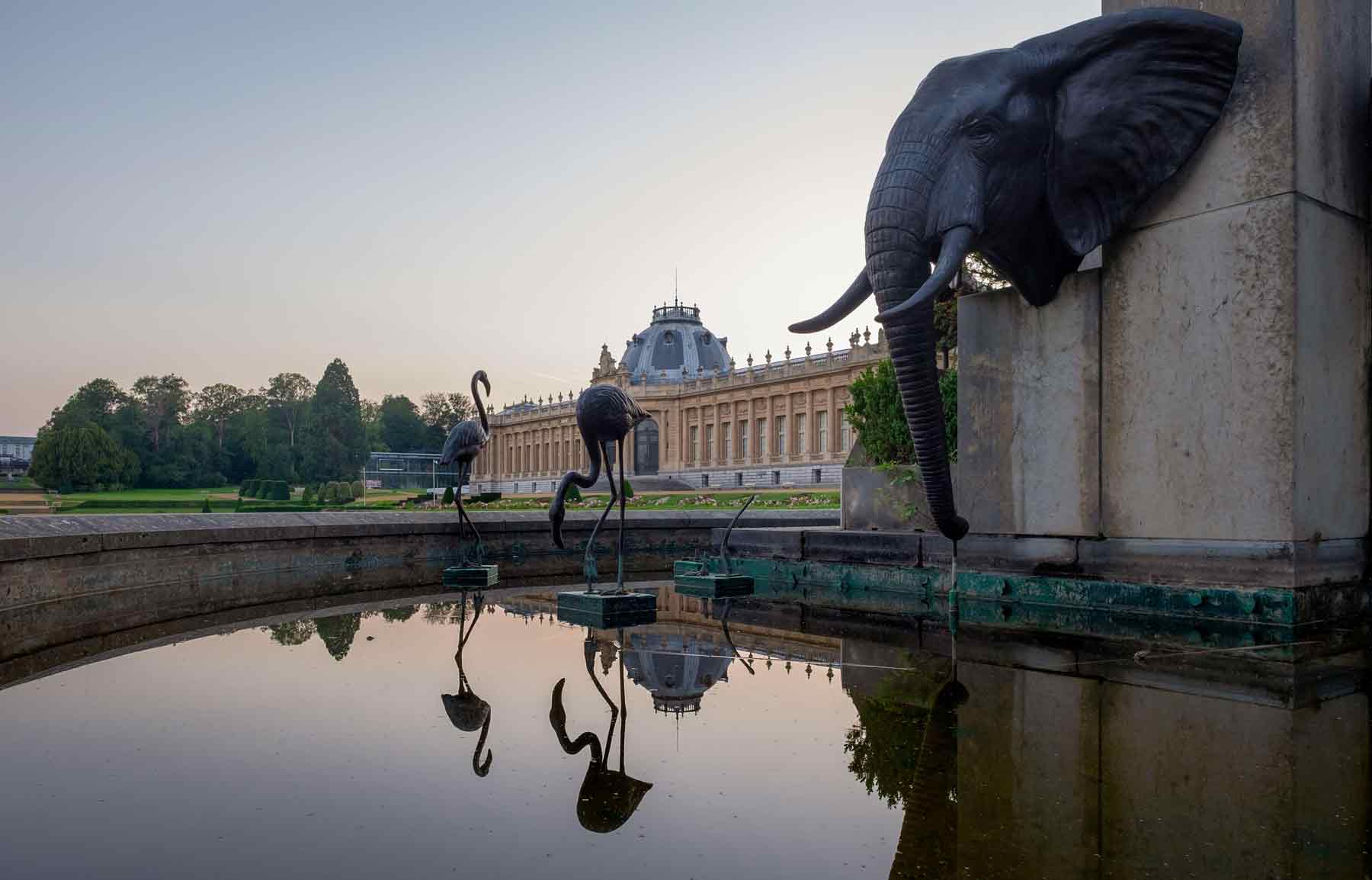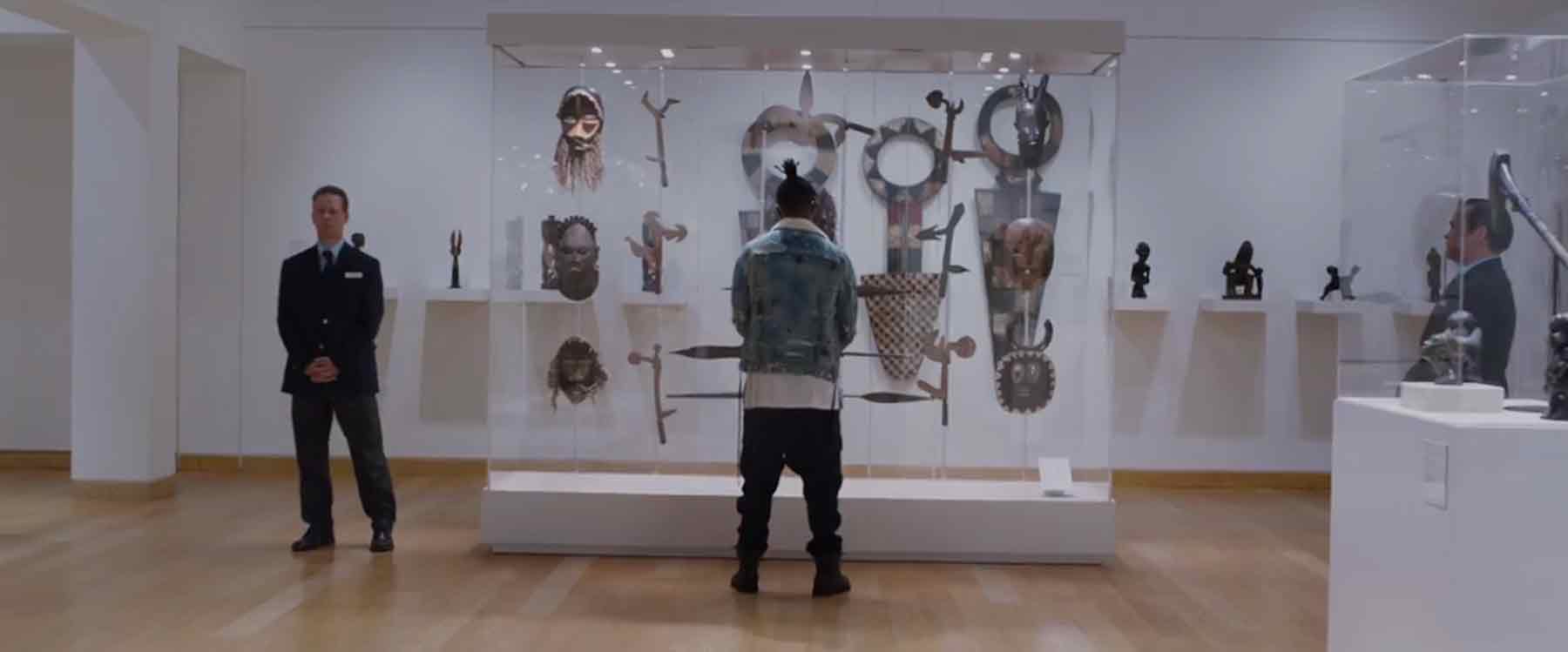Fifty-four years ago, Ghanaian Nii Kwate Owoo, then a student at the London Film School, was granted access to the storage facilities of London’s famed British Museum. The result was You Hide Me – a 40-minute film depicting Owoo and his colleague discovering an enormous volume of colonial objects hidden away in the institution’s basement, as they rummage through bags and cupboards, while holding up art pieces from masks to jewellery for the camera.
The film ends with a clear message: “We, the people of Africa and of African descent, demand that our works of art, which embody our history, our civilisation, our religion and culture, should immediately and unconditionally be returned to us.”
Five decades later, this request is as pertinent as ever. The British Museum, the main subject of Owoo’s then-controversial film, still holds 69,000 African artefacts in its collection – and that’s just the tip of the iceberg.
Cultural rights are human rights, too, and western countries are denying us those
The major public museums in England, France, Germany, Austria and the Netherlands account for more than half a million objects. According to experts, more than 90 per cent of sub-Saharan artistic heritage is currently housed outside the continent as a result of colonial occupation during the 19th and 20th centuries.
In practice, this means the African population is largely denied access to its own cultural and artistic heritage. “Very few of us get to see it. You need money, you have to travel – just getting a visa is a nightmare,” says Raphael Chikukwa, the executive director of the National Gallery of Zimbabwe and founding curator of the Zimbabwean Pavilion at the Venice Biennale. “We want to celebrate Africa in Africa. [So] people can enjoy what their ancestors did, and be inspired by their artists,” he says.
Chikukwa adds: “How are we supposed to do more research about our roots and identity? Cultural rights are human rights, too, and western countries are denying us those. The repatriation and restitution of African heritage is long overdue.”
 The British Museum in London still holds 69.000 African artefacts in its collection
The British Museum in London still holds 69.000 African artefacts in its collection
As early as the 1960s, when many African countries gained independence, the topic was brought up in magazines, films, editorials and at festivals. The first official restitution request in a colonial context was made by Nigeria in 1972, and was largely greeted with inaction and ignorance.
Tired of waiting, Ekpo Eyo, a Nigerian archaeologist who was then head of the country’s federal department of antiquities, decided to buy back several looted objects himself at an auction in 1980 – for half a million pounds (more than €3m in today’s money).
The history of the art restitution debate is one of deflection and obstruction, as Bénédicte Savoy, professor of modern art history at the Technical University of Berlin (TU), maps out in her book, Africa’s Struggle for its Art: History of a Postcolonial Defeat. Accordingly, the emergent debate in the 1960s and 1970s fizzled out, largely overshadowed by, as Savoy calls it, “disavowal and arrogance.”
One recurring tactic by museum directors has been to employ the argument that Africans don’t know how to care for the objects in question. That assertion was firmly debunked last year when the British Museum announced that up to 2,000 objects in its care were either lost, stolen or damaged. The embarrassing incident led to renewed calls for restitution.
“If our ancestors were good enough to make those objects, we are good enough to look after them, too,” says Chikukwa. “You can’t steal my bicycle and say you’ll only return it when I have built a garage.”
European museums can rely on the statute of limitations. You need a political decision to get things moving
In a legal sense, stalling the issue played into the hands of the former colonisers. “There is no legal basis for a claim,” explains Gert-Jan van den Bergh, art lawyer at Bergh Stoop & Sanders in Amsterdam, who has been involved in art restitution cases concerning Nazi-looted art. “Too much time has passed. European museums can rely on the statute of limitations. You need a political decision to get things moving.”
In November 2017, French president Emmanuel Macron took it upon himself to do just that. During a now-landmark speech in Burkina Faso’s capital, Ougadougou, he stated: “African heritage cannot solely exist in private collections and European museums (...) Within five years I want the conditions to exist for temporary or permanent returns of African heritage to Africa.”
Subsequently, Macron commissioned a study that should mark another turning point in the debate: the so-called Sarr-Savoy report, which was co-published in 2018 by Bénédicte Savoy and Senegalese academic and writer Felwine Sarr.
Recommending the permanent repatriation of African heritage looted during the colonial era as well as a new, equal power dynamic between France and African nations, it calls out “a system of appropriation and alienation – the colonial system – for which certain European museums unwillingly have become the public archives”.
 Benin bronze photographed during the ceremony to return them to Nigeria from Germany in Abuja, December 20, 2022
Benin bronze photographed during the ceremony to return them to Nigeria from Germany in Abuja, December 20, 2022
The groundbreaking report garnered a lot of media attention, both in France and internationally, launching a spirited global conversation. Sarr and Savoy even made it on to Time magazine’s prestigious list of the 100 most influential people of 2021. The debate gained new momentum and the French initiative spilled over into other European countries, fuelled by civil society movement Black Lives Matter, which had instigated a reckoning in the art world.
“There is a new awareness now. Twenty or 30 years ago, nobody cared, but now colonial art restitution is a focal point,” says Dutch-born van den Bergh, pointing to the fact that, in the 1970s, Indonesia had submitted a long list of items to its former coloniser, the Netherlands, before the country finally handed over 478 cultural objects to Indonesia and Sri Lanka in July last year.
A few months earlier, Germany had returned 22 of the famous Benin bronzes to Nigeria, while signing a deal that assures the return of hundreds more. In the meantime, Belgium created a legal framework for future restitutions, and provided the relevant African governments and institutions with lists of the inventory of its Africa Museum in Tervuren. Created by Leopold II as a colonial propaganda instrument, it has a collection containing 120,000 African objects, mainly from the present Democratic Republic of Congo, Rwanda and Burundi.
While the physical returns are symbolically significant, the numbers show they are only a drop in the ocean. “This is just the start,” Van den Bergh believes. “They began with the most clear-cut cases, where involuntary loss and ownership were obvious. The more difficult cases will emerge in the coming years when ownership and questions of whether it was loot or not will be on the table.” After all, the restitution of Nazi-looted art took decades.
 Created by Leopold II as a colonial propaganda instrument, the Africa Museum in Tervuren, Belgium, has a collection containing 120,000 African objects
Created by Leopold II as a colonial propaganda instrument, the Africa Museum in Tervuren, Belgium, has a collection containing 120,000 African objects
But overall, Europe is divided. Take Portugal, for instance. In 2020, its parliament voted against a law seeking to return artworks to former colonies. That’s why some advocates of restitution have been calling for a pan-European approach. The European Parliament’s juridical and cultural committees have both dealt with the issue. A committee report from November 2021, “encourages the development of EU guidelines on restitution and calls for Member States to continue or to initiate processes for the restitution of cultural works and artefacts in a more consistent and timely manner”.
The European Commission, on the other hand, did not comment on the initiative, contending that the issue should be addressed by individual Member States.
However, Germany and France are taking a step in the direction of cross-border collaboration. Just last month, the countries’ cultural ministries announced the launch of the first fund dedicated to international cooperation in provenance research – or the study of an object’s history and ownership – which many western politicians and academics say is a key step in the restitution process.
For others, lengthy provenance research is just another way to postpone permanent restitution. “Africa is tired of the same colonial excuses,” says Chikukwa. “People are not being practical about the issue. I don’t understand why we are academising this. Let’s get the object back to its people, and they can decide what to do with it.”
There is always this asymmetric relationship of power. The power of the one who gives you back the object … the one to decide when and where
He also highlights the one-sided approach of western provenance research: “It’s mainly done by foreigners, not involving local communities. Today, there are still elders who could tell us what certain objects mean. Excluding them means repeating colonial trauma,” he adds.
Similarly, Toma Muteba Luntumbue, a Congo-born curator, teacher and artist based in Brussels, says: “There is always this asymmetric relationship of power. The power of the one who gives you back the object … the one to decide when and where.”
If the restitution process is to do justice to the goal of decolonisation, the west needs to stop gatekeeping. “It’s not for Belgians to decide. It’s up to the Congolese, in the context of Congo’s current identity,” says Luntumbue.
He touches upon an issue that is a central point of contention and illustrates the cultural clashes complicating the debate. From the African point of view, restitution doesn’t necessarily mean a transfer from museum to museum. After all, the pieces in question were not taken from museums. “At the time, they were ritual objects, used for the protection of a village, for example,” explains Luntumbue.
 Artworks taken by France from Benin during the colonial era arrive in Cotonou
Artworks taken by France from Benin during the colonial era arrive in Cotonou
In that vein, he lauds the unprecedented decision by the American Museum of Natural History just a few weeks ago, to close its Native American exhibits – a result of new federal regulations requiring museums to obtain consent from tribes before displaying or performing research on cultural items.
Things are moving slowly, but they’re moving. While the return of art objects is still the exception rather than the rule, museums can no longer dismiss the issue. Bart Ouvry, director of the Africa Museum in Brussels, confirms: “For our credibility as an actor, restitution is essential. If we do not engage with this, in an honest and cooperative way, it would be very dangerous for our legitimacy as an institution.”
Still, for some, the physical restitution of artworks is not the be-all and end-all. Luntumbue takes it all with a pinch of salt: “Restitution is necessary, but also impossible. The essential has already been killed – by forced labour, Christianisation, occidentalisation. The objects won’t bring back the values they stood for. That has been long destroyed.”
Meanwhile, You Hide Me is still the subject of workshops and shown at festivals more than 50 years after its inception. As recently as 2020, it won Best Short Documentary Prize at the Paris International Film Festival. At the same time, the issue has worked its way from the fringes into mainstream pop culture and on to the big screen by way of Marvel’s Black Panther.
 Film still from the museum scene in Black Panther (2018) © Walt Disney Studios Motion Pictures
Film still from the museum scene in Black Panther (2018) © Walt Disney Studios Motion Pictures
The blockbuster, which hit cinemas in 2018, includes a scene that distils European consumption of colonial looted art into a few minutes of superhero action. At an institution thinly disguised as the British Museum, the story’s Wakanda-born villain, Killmonger, is seen looking at a collection of African art. He encounters the exhibition’s white curator, and corrects her on the provenance of an axe: “It was taken by British soldiers in Benin, but it’s from Wakanda … I’m gonna take it off your hands for you,” he says.
When the woman condescendingly tells him the items are not for sale, Killmonger says: “How do you think your ancestors got these? You think they paid a fair price? Or did they take it, like they took everything else?”
Sign up to The Parliament's weekly newsletter
Every Friday our editorial team goes behind the headlines to offer insight and analysis on the key stories driving the EU agenda. Subscribe for free here.